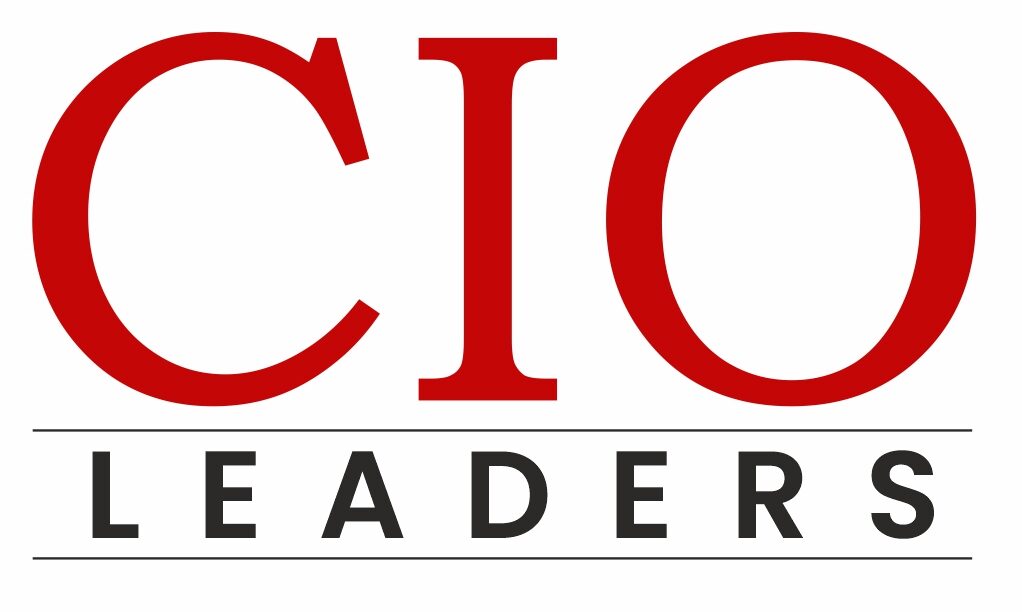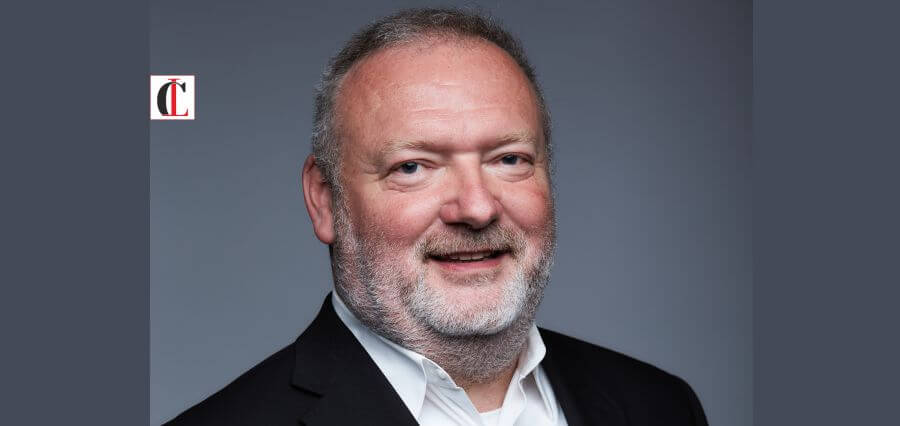Redefining Advanced Computing!
The semiconductor industry has become foundational to technological advancement, supporting the fast growth of artificial intelligence (AI), data analytics, and high-performance computing. Today, as these fields demand more processing power and efficiency, the industry is innovating to address intricate computational needs and reduce energy consumption. The shift toward advanced processors, accelerated computing, and integrated memory solutions highlights a strong focus on enabling faster, more efficient data handling and inter-device communication. In this growing environment, advancements are not solely about speed but also about flexibility and energy efficiency, as engineers design systems capable of supporting increasingly sophisticated applications sustainably.
Axel Kloth, the Founder and CEO, demonstrates a visionary approach to semiconductor innovation. His drive to explore underlying principles and his reluctance to accept limitations fuel his innovative leadership. Axel is rethinking conventional ideas about supercomputing, focusing on efficiency and communication rather than raw processor speed. His approach highlights building adaptable systems that balance energy efficiency with performance, encouraging a culture that values curiosity, problem-solving, and the pursuit of novel solutions to longstanding industry challenges. By focusing on training the next generation of engineers, he is actively cultivating a future workforce adept at steering the demands of a growing technological sector.
Under Axel’s guidance, Abacus Semiconductor Corporation aims to redefine high-performance computing by advancing processors, accelerators, and memory systems that cater to AI and other demanding computational needs. Abacus aims to create products and an ecosystem that address key challenges in performance and efficiency while offering investors a promising return on investment. With a focus on high-value intellectual property and a product line designed for future growth, the company is positioning itself as a trusted leader in the semiconductor sector, bridging the gap between advanced innovation and practical, scalable solutions for a data-driven world.
Let’s delve into Axel’s strategies for innovating the next generation of semiconductor solutions:
Curiosity and Understanding Principles
Axel has always been a very curious person. As a kid, as a teenager, even now. He always wants to know how things work. He wants to see the underlying principles of what makes something function the way it does. He also does not like rules, simply because a rule is something that someone else puts together. That includes engineering rules. He wants to know why rules exist, even if the rules allow people to successfully build something.
To him, rules are an abbreviation and a shortcut to go from idea to product, and as such, they have value. However, more often than we realize, these rules may hold us back from doing something different and better. Physics is all about trying to understand the basic principles. Most things can be derived from a very limited set of physical laws. As such, it was only natural that he studied physics.
Physics uses lots of computing these days, and even 40 years ago, supercomputers were used to apply physical laws to some basic data and then try to match that up to observations.
Axel believes, “If it matched, it was a good indication that the laws we had derived were correct, and our assumptions of the starting data set were about right as well. Small deviations did not matter much. However, when those simulations did not render the results we were expecting, sometimes we found that the supercomputers produced mathematically the wrong results (data sets turned out to not be precise enough, or mathematics as implemented in the Central Processing Unit or CPU was incorrect), and sometimes we had to simplify too much to get the runtime down to acceptable times (sometimes in the range of weeks).”
Additionally, “Dictated by the need to cut short or oversimplify our simulations, we found that even supercomputers were too slow.” That made him rethink supercomputers and the processors, accelerators, and memories that go into them.
The goal was to make them faster, consume less energy, and make them a bit easier to use as well. At the same time, he wanted to keep flexibility to the degree that they remained reprogrammable. While fixed-function devices would be faster and more energy-efficient, they were also not programmable, so a compromise needed to be found.
Building Efficient and Flexible Computing Systems
Because Axel likes to get to the bottom of a challenge, he saw that many companies were started predicated on the idea to make a processor faster. Intuitively, that approach appears to be correct, but it turns out that no matter how fast the industry makes a processor, the application needs always grow faster than any performance gains they can return.
As a result, he thought that when connecting thousands of devices, the performance of each one is less relevant compared to the ability of them to talk to each other. In computer science terms, this is called Inter Processor Communication, or IPC.
The latency (delay between sending a request and receiving an answer) and the bandwidth (how much data can be transmitted in any time period) of IPC turned out to be a much better determinant of the performance of a system consisting of thousands of processors than the performance of each single processor.
Combining accelerators into this schema as opposed to only using processors enabled them to retain flexibility, reconfigurability, and programmability while at the same time improving performance and energy efficiency. Adding smart memory subsystems to the mix to allow for easier sharing of data and metadata allowed them to improve total memory size, bandwidth, and latency.
Higher density communication channels on all of their devices reduce power consumption further, so the resulting supercomputer would be at the same time faster, use less energy, and produce less waste heat. In essence, in any part of his career where he had to use supercomputers or rely on their results, he was unhappy with the performance, the cost, and the lack of attention to ease of use.
When AI became a hot topic and he tried to create a foundational model for use in-house to improve their code generation and the creation of documentation from existing code, he noticed that AI and High-Performance Compute share the same underlying needs, and that was the trigger for him to build something novel that would solve these problems.
Setting Company Direction and Culture
Axel highlights that the CEO has multiple roles in a startup. First, the CEO needs to raise funds. Second, the CEO builds the team and gives the direction the company needs to take, in conjunction with and in collaboration with the team, particularly the Executive Management Team.
The CEO and the first hires determine the company culture, and ideally, the Executive Management Team will reflect the values of the CEO. This is important as the subsequent hiring process needs to complete the team but retain the culture.
Training the Next Generation of Engineers
His leadership style is hands-off because they bring on talent who knows how to do their job. Axel discusses with the team what needs to be done, in which time frame, and how many resources will be required. The team then agrees on checkpoints along the way for him to assess if they are on the right path and on time.
The company tries to hire people who are smart, frustration-resistant, diligent, and can work autonomously. When hiring leaders, he also takes into account that this industry is aging, and as such, it is important to train and teach the less experienced ASIC design engineers.
Ensuring a Decent Return on Investment
The most significant challenges Axel faced as a leader in the tech industry are tied to raising funds. Money is crucial to running a business, and in order for a CEO to raise funds, everyone has to convince investors that the money is safe with the company, that there is a high likelihood of a decent return on their investment within a reasonable time frame, and that the company has some unique selling point in their products or services that others cannot easily replicate. In essence, the investors must be able to trust the CEO. Trust is built and earned, and there is no single correct way to do that. It is interpersonal, and as such, there is no recipe for doing that.
Staying Ahead in a Fast-Growing Field
He believes that staying ahead of the curve in a fast-growing field involves “reading, trying things out, breaking them, figuring out what was responsible for the failure, trying to fix it, and rethinking from time to time why things are done the way they are.”
Axel highlights, “Sometimes things are done a certain way, not because it is the best way, but because it is the cheapest way, the established way, or because no one can even remember anymore why.”
Advice for Aspiring Entrepreneurs and Innovators
Axel’s advice to aspiring entrepreneurs and innovators, particularly those in the high-tech industry, who are looking to make an impact is to never be afraid to change things. There is always going to be some opposition, but that can usually be overcome with good arguments.
Standardizing APIs for Accelerated Compute
Axel is convinced that the industry will move from computing in software on a Central Processing Unit (CPU) to accelerated computing using General Purpose Graphics Processing Units (GPGPUs) to Heterogeneous Accelerated computing on a variety of pin-compatible accelerators with a unified set of interfaces for special-purpose applications.
GPGPUs have set the direction of offloading the CPU, and that was a great start. The industry will now complete that transformation and use standardized Application Programming Interfaces (APIs) and libraries such as OpenCL, OpenACC, and CUDA to make accelerators independent of the CPU’s Instruction Set Architecture (ISA).
Ensuring Financial Security for Investors
Abacus Semiconductor Corporation aims to be the go-to company for processors, accelerators, and smart multi-homed memory subsystems for all things AI and High-Performance Compute (HPC).
Building that product portfolio, the ecosystem, and Abacus Semiconductor Corporation’s partners will enable it to occupy that part of the market, creating a profitable company with a defensible set of intellectual property that it plans on extending continuously.

